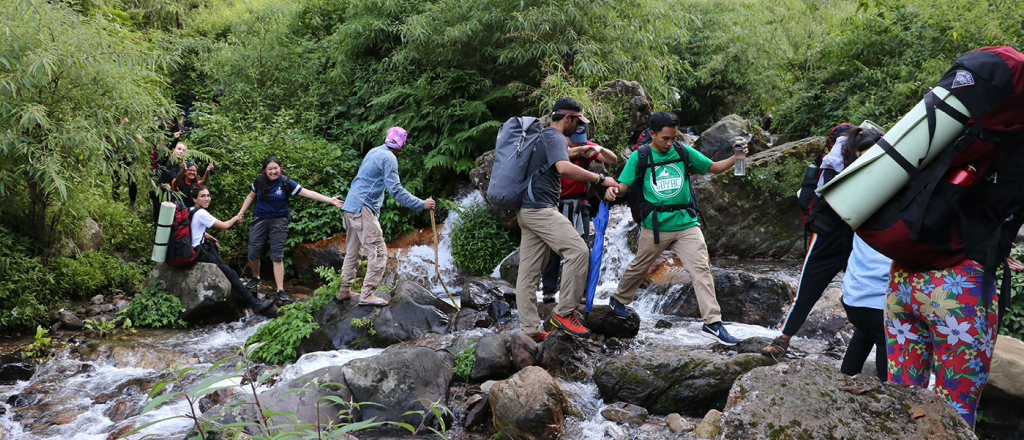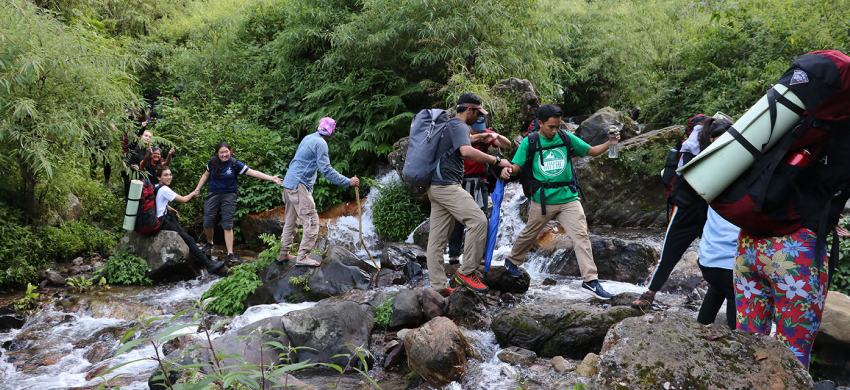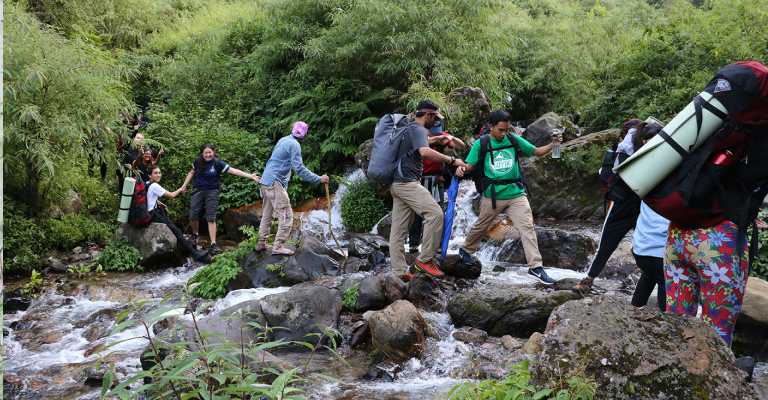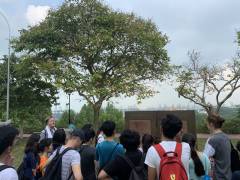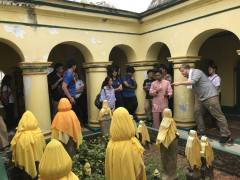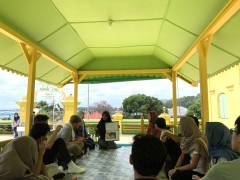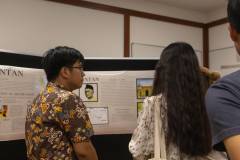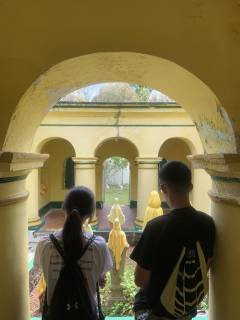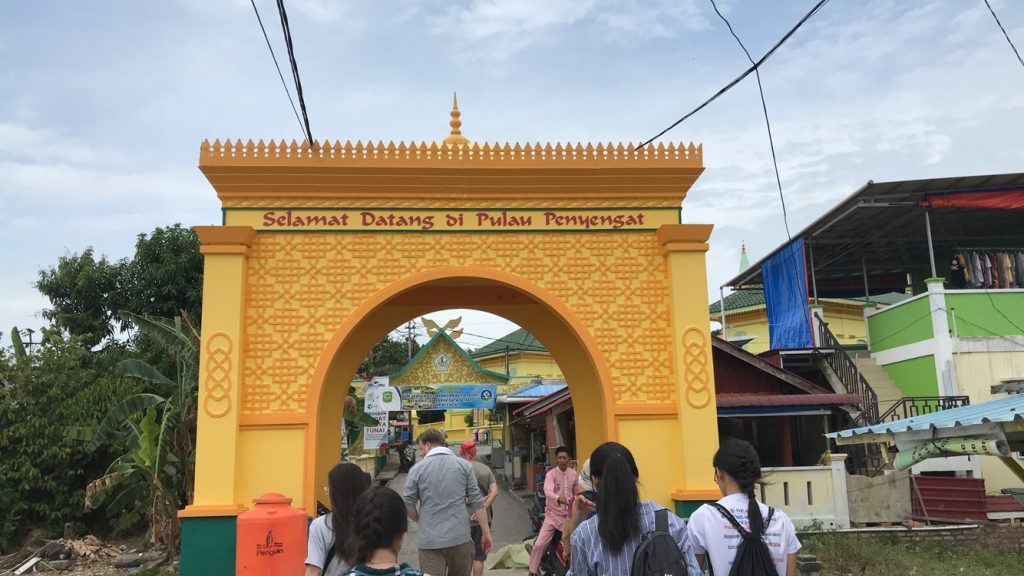
This Week 7 LAB introduced students to the various ways in which the past is remembered in Singapore and its neighbours, the interconnected history of the region, and the shifting relationship between public memory and history.
It prepared students for the historical writings covered in the Literature and Humanities 1 (LH1) course of the first-year Common Curriculum immediately after Week 7, and brought them to sites directly connected to the Sejarah Melayu, one of the texts in that class.
Since the 1990s, the Second World War has loomed large in the Singaporean historical memory, dominating local history textbooks, museum exhibitions, and the landscape through monuments and historical plaques. In 2019, however, celebrations of the bicentennial encouraged museum curators, textbook writers, and everyday people to re-examine the history of Singapore before the Second World War and, indeed, before the arrival of the British in 1819. On this LAB, students examined the evolution of public memory in Singapore over the past few decades through walking tours, film screenings and museum visits. Students learned about historical events that have recently re-emerged into public consciousness, and those that are still largely ignored.
The group then travelled to Bintan, an island in nearby Indonesia. As the former centre of the sultanate that controlled Singapore before British colonisation, public memory in Bintan is focused more firmly on the pre- and anti-colonial past, while discussion of the Second World War is far less common and the trauma of this period is often mediated in less “historical” ways, such as through ghost stories. After visiting a local primary school and meeting the author and publisher of a local history, students spent an evening discussing the relationship between the genre of horror and the traumatic past (by telling scary stories in the dark). The following day, students visited historical sites associated with the Riau-Lingga Sultanate, learning why this history plays such a dominant role in local public memory and which groups and individuals have acted as caretakers of local history.

